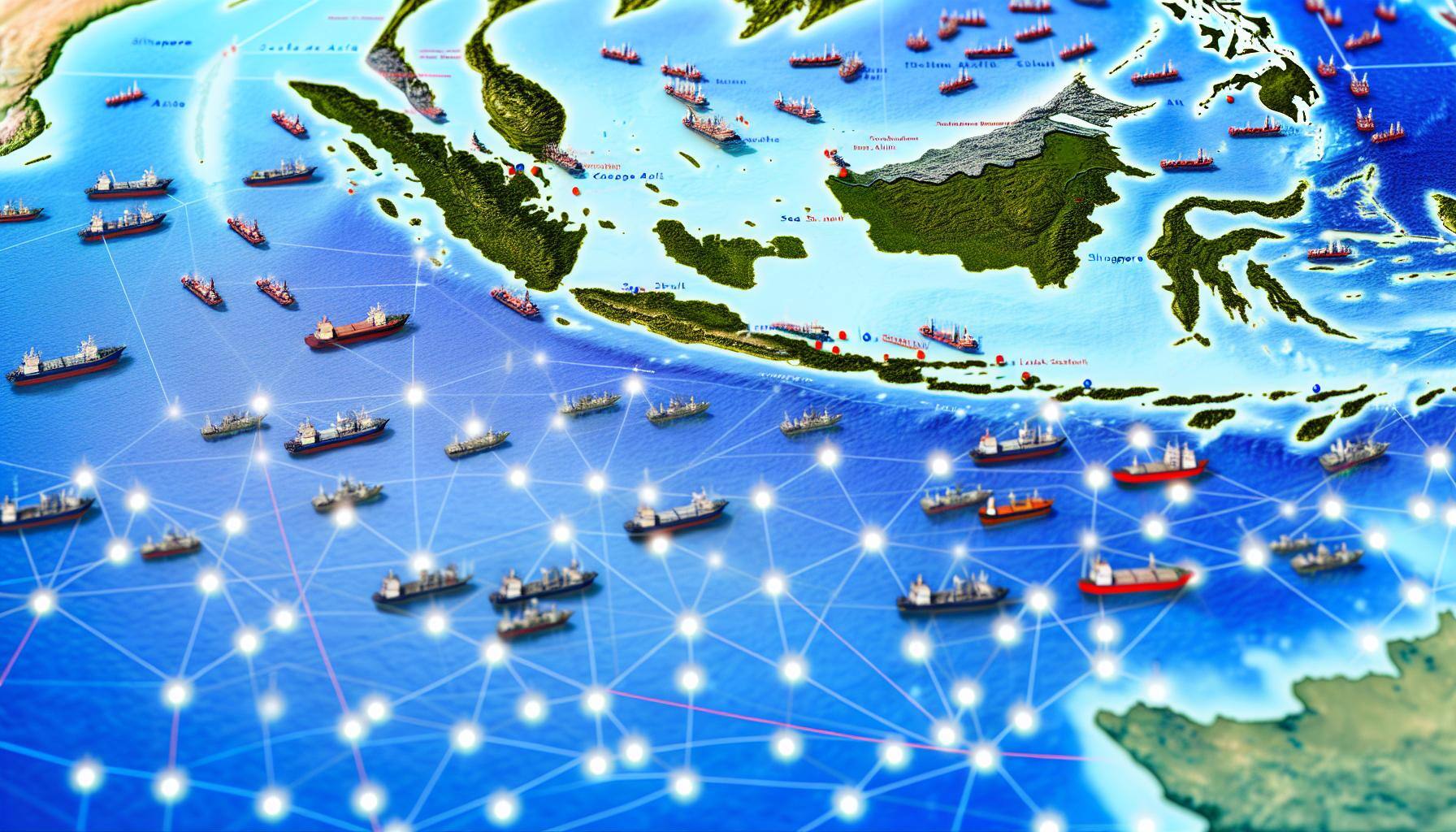Over the past two decades, Southeast Asia's sea lanes, once notorious for pirate activity, have seen significant improvements in security.
This is thanks to concerted efforts by ASEAN member states, international partners, and the shipping industry. However, despite this progress, the threat of maritime crime persists and could potentially resurface due to emerging trends.
Importance of Southeast Asian Sea Lanes
Southeast Asia plays a crucial role in global supply chains, with 80% of international goods transported by sea. The region's strategic location connects East Asia, Australia, South Asia, the Middle East, Africa, and Europe, making it a hub for raw materials, manufacturing, and trans-shipment. Key chokepoints such as the Singapore Strait, Malacca Strait, and Lombok Strait are vital for global maritime trade, with the Singapore Strait alone handling up to 70% of the world's maritime trade.
Governance Challenges and Efforts
International law provides a framework for maritime governance, but enforcement largely falls on coastal states. Many Southeast Asian states lack the capacity to effectively govern their waters, leaving gaps that criminals exploit. Singapore, with its robust governance capabilities, is an exception. These gaps provide opportunities for non-state actors, including pirates and terrorists, to disrupt maritime traffic.
Historical Context of Maritime Crime
In the late 1990s and early 2000s, Southeast Asia experienced high rates of piracy and armed robbery. The International Maritime Bureau reported escalating attacks, with incidents peaking at 257 in 2000. Terrorism also posed a significant threat, with groups like the Moro Islamic Liberation Front and Abu Sayyaf Group conducting deadly attacks on maritime targets. The situation peaked in 2005 when the Malacca Strait was deemed at risk from war, strikes, and terrorism by the Lloyd's insurance market, prompting skyrocketing insurance rates.
Regional and International Cooperation
The improvement in maritime security can be attributed to increased regional cooperation and capacity-building efforts. Initiatives like the Malacca Strait Patrol, ReCAAP ISC, and the Information Fusion Centre (IFC) have enhanced coordination and information-sharing among Southeast Asian states and international partners. These efforts have been supported by the development of regional coast guards and the implementation of the International Port and Security Code (ISPS) post-9/11, which mandated comprehensive security measures for ports and ships.
Technological Advancements
Technological advancements have bolstered maritime domain awareness, with the proliferation of Automatic Identification Systems (AIS), drones, and satellite-based surveillance. These technologies have improved the ability of states to monitor maritime activities and respond to threats. The shipping industry has also adopted best management practices to deter piracy and armed robbery, further enhancing security.
Emerging Threats
Despite the progress, several trends indicate a potential resurgence of maritime crime. The accessibility of high-quality maritime awareness data to criminals, the rise of cyber threats, and increasing geopolitical tensions complicate regional cooperation. For instance, the inability of ASEAN to hold a joint military exercise in the South China Sea due to concerns over China's reaction underscores the fragility of regional cooperation.
Conclusion
While Southeast Asia has made significant strides in improving maritime security, the persistence of criminal incidents and emerging threats highlight the need for continued vigilance and cooperation. Ensuring the security of Southeast Asian sea lanes is crucial for global supply chains, and addressing these challenges will require sustained efforts from regional states and their international partners.





